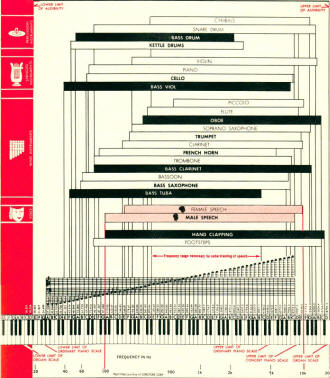|
August 1967 Electronics World
 Table
of Contents
Table
of Contents
Wax nostalgic about and learn from the history of early electronics. See articles
from
Electronics World, published May 1959
- December 1971. All copyrights hereby acknowledged.
|
It's easy enough these days to find sound frequency charts for
instruments on the Internet, but it wasn't always that way.
Back in 1967, you either had to own a book with the information
or go to the library and borrow one. Another option was to subscribe
to Electronics World. It, along with many of the electronics
magazines, published a lot of articles on electronic instruments,
which were just coming of age then. Having a chart handy was
a big convenience.
Musical Instrument Sound Chart
The chart shown below indicates the audible frequency range
of a variety of musical instruments. In most cases, the range
indicates not only the instrument's fundamental frequency, but
certain overtones that create the distinctive character of the
instrument. In the case of the piano, note that the instrument
keyboard goes to a lower fundamental frequency than is shown
by the frequency range indicated near the top of the chart.
This is because the output at the lower piano notes are mainly
harmonic in nature.
Not shown on the chart are the high-frequency noises that
accompany many instruments to produce a certain amount of "color",
i.e., reed noise in the woodwinds, bowing noises in the stringed
instruments, and key clicks and thumps of the piano and percussion
instruments, etc.

|










